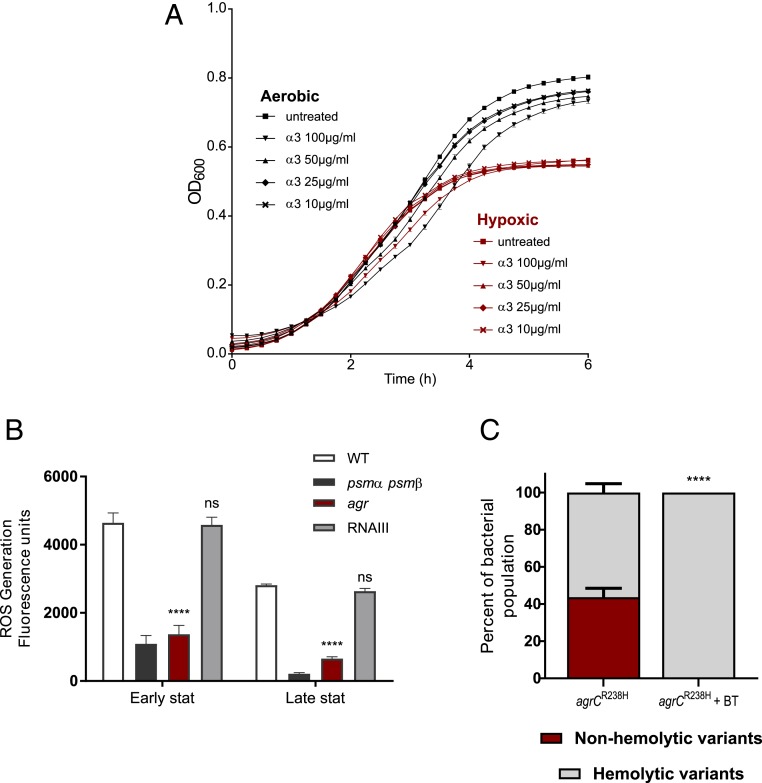Fig. 6.
PSMs induce ROS and possess antimicrobial activity under aerobic conditions. (A) Different concentrations of PSMα3 (100, 50, 25, and 10 µg/mL) were added to bacterial cultures of HG001 agr. Growth under aerobic and hypoxic environments was monitored. Error bars indicate SEM (n = 3). Bacterial yield compared to the untreated control was significant only under aerobic growth (****P ≤ 0.0001) and not under hypoxia. (B) Early and late stationary phase cultures of HG001, psmα psmβ, agr, and RNAIII were compared for ROS levels. Error bars indicate SEM (n = 3). Asterisks indicate statistical significance in comparison to HG001. (C) HG001 agrCR238H evolved for 3 d in the presence of antioxidants (1 mM 2,2'-bipyridyl and 100 mM thiourea). Percentage of nonhemolytic and hemolytic subpopulations was determined based on colony phenotype on blood agar. Error bars indicate SEM (n = 3). Asterisks indicate statistical significance in comparison to the HG001 agrCR238H. Statistical significance determined by (A) one-way ANOVA with Tukey’s posttest and (B and C) two-way ANOVA with Bonferroni’s posttest. *P ≤ 0.05, **P ≤ 0.01, ***P ≤ 0.001, and ****P ≤ 0.0001.

